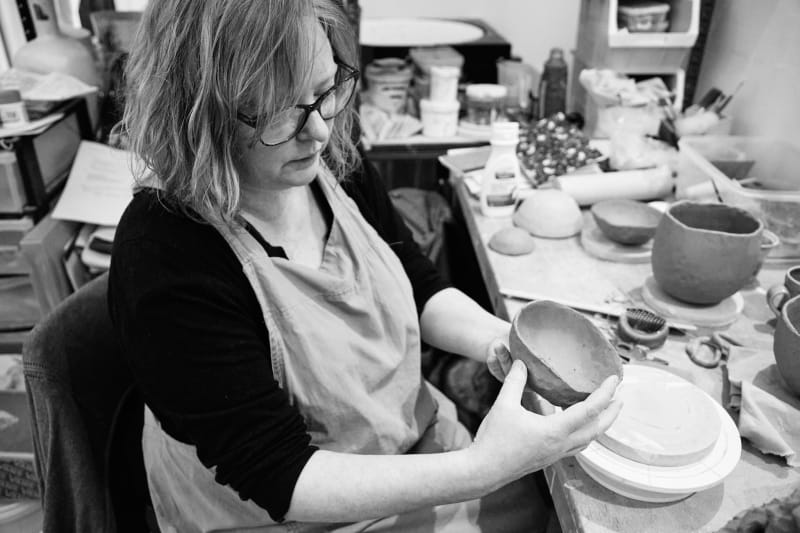My work explores broad themes including nostalgia, memory, travel, photographic ‘seeing’, and commemoration. I’ve just finished a project that explores formal gardens and plants. Lockdown restrictions came into place early on in the project, so the ability to travel and visit gardens further afield was curtailed. The research material I gathered in early 2020 in the Royal Botanic Gardens took on more significance as a snapshot of those moments, pinning down specific visits and seasons. The plant collections in structured gardens could also be seen as artefacts but they are evolving/growing/living, only fixed in place by photographs or by preservation in the herbarium. I began to draw my own house plants, focusing on this almost miniature world away from the outside. The repetition of drawing became important, as a way to move the project forward and as a way to distract from the bigger issues. In some ways the work became about my response to being contained.
My most recent pieces were made in response to numerous objects in the National Museum of Scotland collections, in particular the taxidermy collections of endangered or extinct animals. It’s been a great source of inspiration on and off over the years, ever since I was an art student in the early 1990s. This work is the start of a new project exploring our complex relationship with animals.
Initial research through drawing, reading, notes and photography feed into test pieces. The process of creative development is as much part of the work as the finished work itself. I intend the pieces to have the same intention as a painting or print, and not a domestic function, but instead to make some references to the domestic. I’d like to encourage the viewer to question their assumptions about ceramics and function, and interpret the work in their own way. Perhaps it will instigate memories of their own; open up conversations about their own experiences. Not focusing on utility frees me up to explore a wider range of surface qualities and shapes without the ‘constraints’ of function.
The vessels combine traditional and contemporary processes; built by hand (stoneware or porcelain), usually coiled or slab built, then painted and printed with coloured slips. I enjoy the labour intensive approach of handbuilding. Often I incorporate incised lines, lino-printed or mono-printed imagery. They are then glazed; at this stage I may include underglaze pencil or crayon, and oxides. Decals are applied to the fired glazed surface (made from my drawings and photographs), also metal lustres on some. I make work in series, often exploring variations within one form; usually a very familiar and everyday vessel. Often I return to the same shapes over and over again, in different projects years apart. I have a particular interest in very generic and familiar objects such as plates and bottles. I like the challenge of making something unique and personal whilst exploring forms that have been made and reinterpreted by so many people and cultures.
